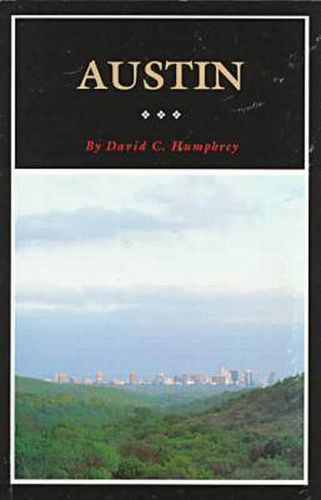Readings Newsletter
Become a Readings Member to make your shopping experience even easier.
Sign in or sign up for free!
You’re not far away from qualifying for FREE standard shipping within Australia
You’ve qualified for FREE standard shipping within Australia
The cart is loading…






State capital and home of the University of Texas, Austin is the one city that belongs to all Texans. This finely written book, illustrated with historic photographs, tells the story of Austin’s transformation from an Indian haunted frontier village into a residential mecca and high-tech hot spot. Called by Sam Houston at its founding the most unfortunate site upon earth for the seat of government, the infant community struggled for three decades against political enemies and competing towns before winning recognition as the permanent capital. The founding of the University of Texas turned the seat of politics into the seat of education, but Austin’s nineteenth-century dreams of becoming a river port and a factory town came to naught.
A slave city in a slave state, Austin cast its lot with the Confederacy. Retaining a frontier flavor into the 1890s, post-Civil War Austin became the headquarters of the Texas gambling fraternity and a magnet for cowmen seeking booze and women of the night.
Turning the nineteenth-century frontier town into an appealing twentieth-century residential community taxed the energies of civic leaders for several decades. Virtually parkless and with no paved streets in 1900, Austin by the 1940s boasted tree-lined boulevards, a cornucopia of parks and pools, and a leisurely lifestyle. But for African American residents these were years of oppressive segregation. Mexicans encountered similar treatment as Austin became a tri-ethnic community during the 1920s and 1930s.
Segregation gradually gave way in a divisive but nonviolent struggle. While adjusting to this, Austin experienced eye-popping expansion. Fearful that Austin would become another Houston, residents sought to preserve the lifestyle that had made the capital city such an attractive place to live.
$9.00 standard shipping within Australia
FREE standard shipping within Australia for orders over $100.00
Express & International shipping calculated at checkout
State capital and home of the University of Texas, Austin is the one city that belongs to all Texans. This finely written book, illustrated with historic photographs, tells the story of Austin’s transformation from an Indian haunted frontier village into a residential mecca and high-tech hot spot. Called by Sam Houston at its founding the most unfortunate site upon earth for the seat of government, the infant community struggled for three decades against political enemies and competing towns before winning recognition as the permanent capital. The founding of the University of Texas turned the seat of politics into the seat of education, but Austin’s nineteenth-century dreams of becoming a river port and a factory town came to naught.
A slave city in a slave state, Austin cast its lot with the Confederacy. Retaining a frontier flavor into the 1890s, post-Civil War Austin became the headquarters of the Texas gambling fraternity and a magnet for cowmen seeking booze and women of the night.
Turning the nineteenth-century frontier town into an appealing twentieth-century residential community taxed the energies of civic leaders for several decades. Virtually parkless and with no paved streets in 1900, Austin by the 1940s boasted tree-lined boulevards, a cornucopia of parks and pools, and a leisurely lifestyle. But for African American residents these were years of oppressive segregation. Mexicans encountered similar treatment as Austin became a tri-ethnic community during the 1920s and 1930s.
Segregation gradually gave way in a divisive but nonviolent struggle. While adjusting to this, Austin experienced eye-popping expansion. Fearful that Austin would become another Houston, residents sought to preserve the lifestyle that had made the capital city such an attractive place to live.